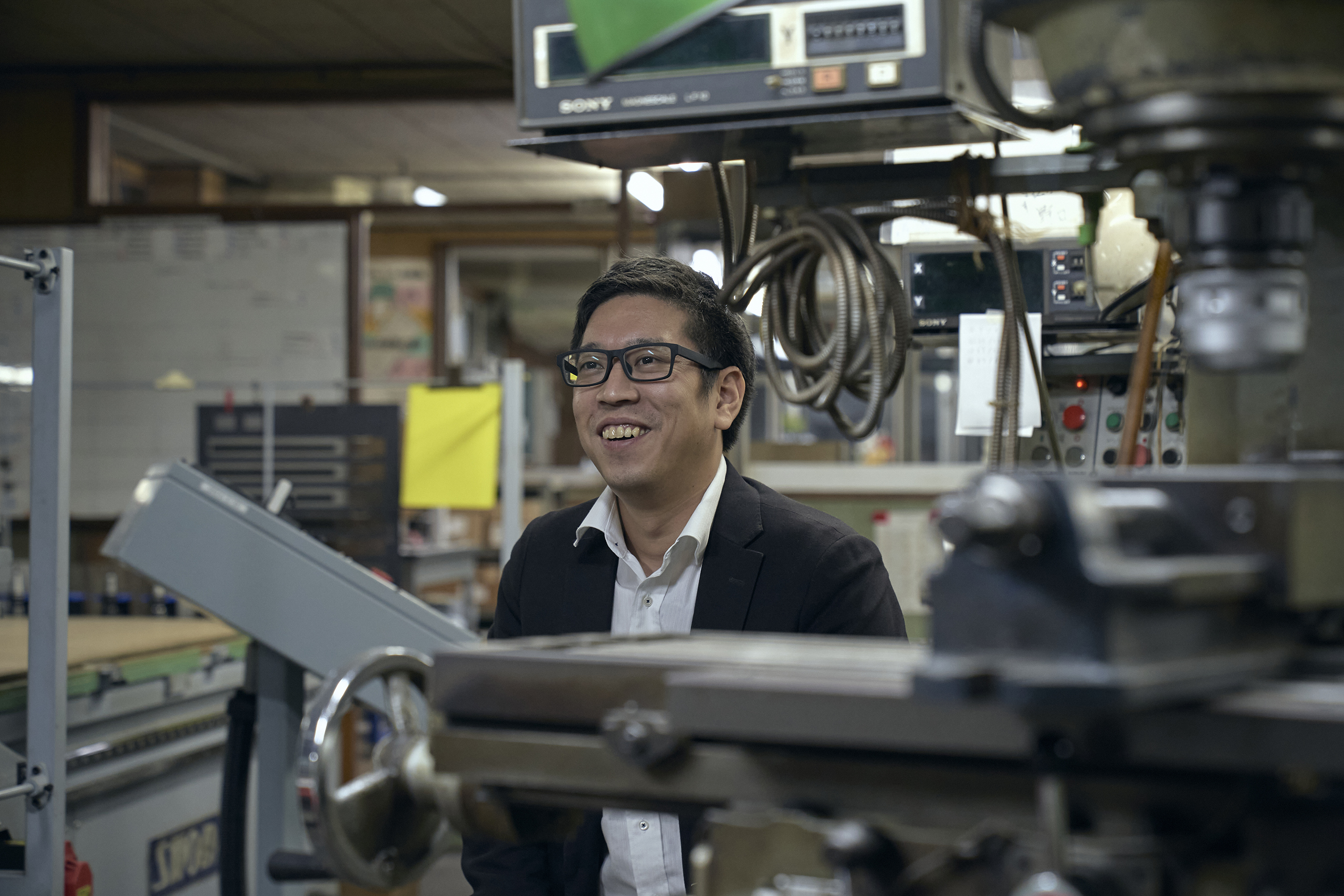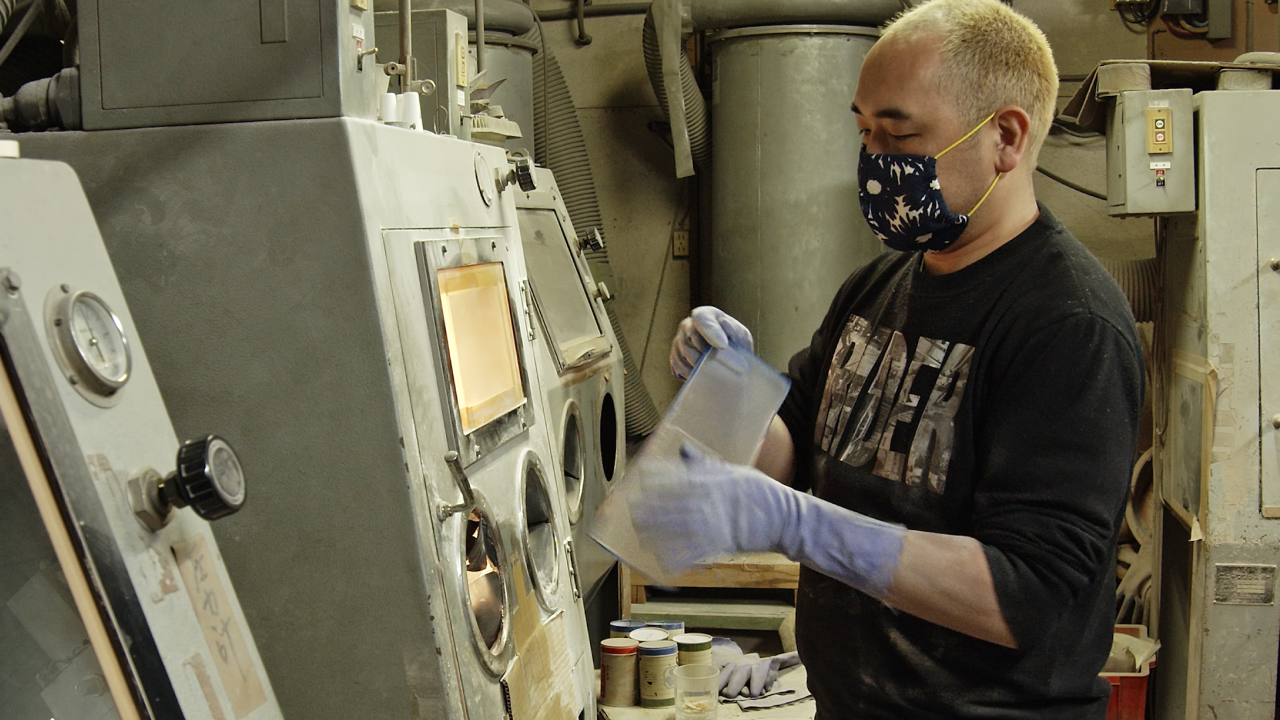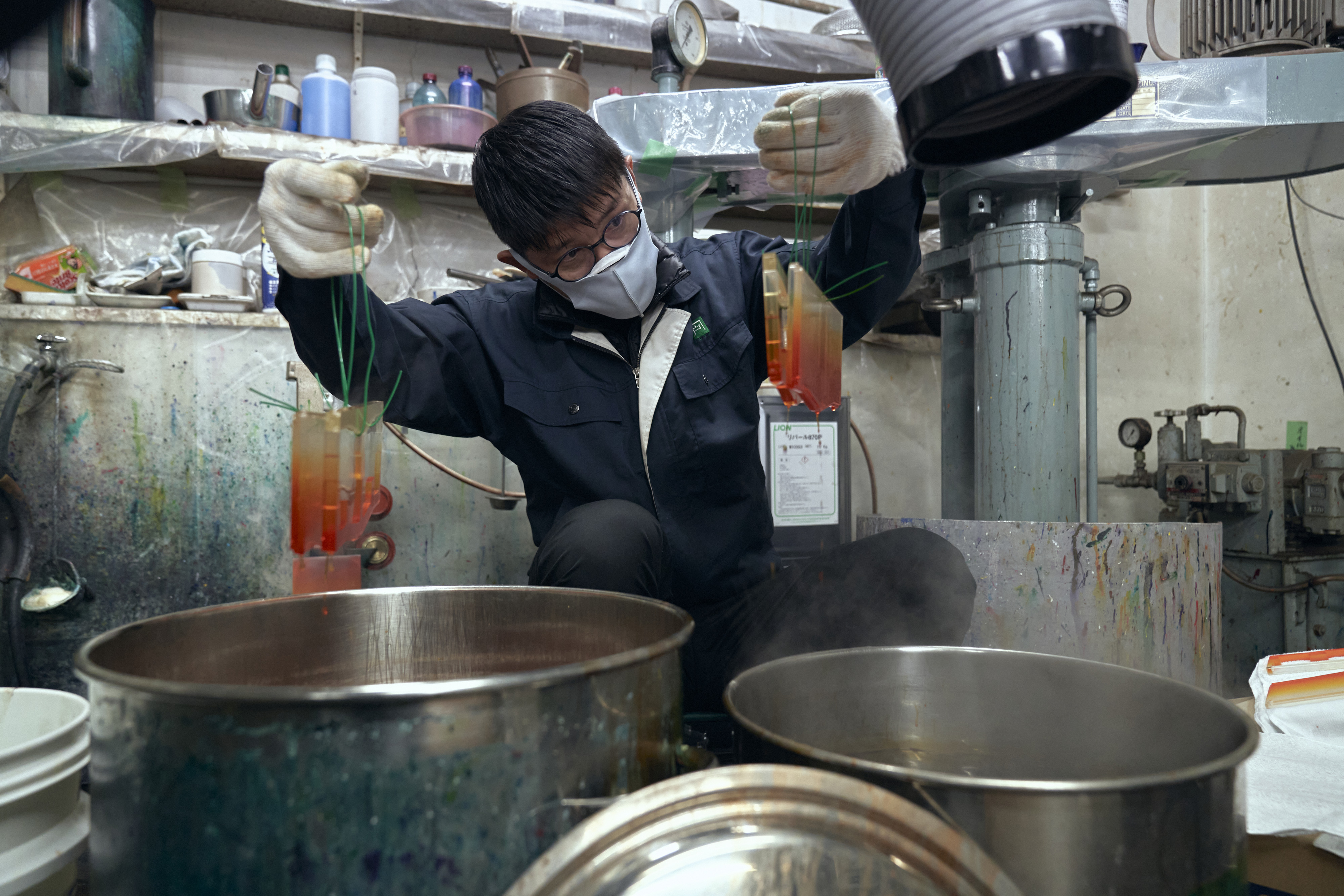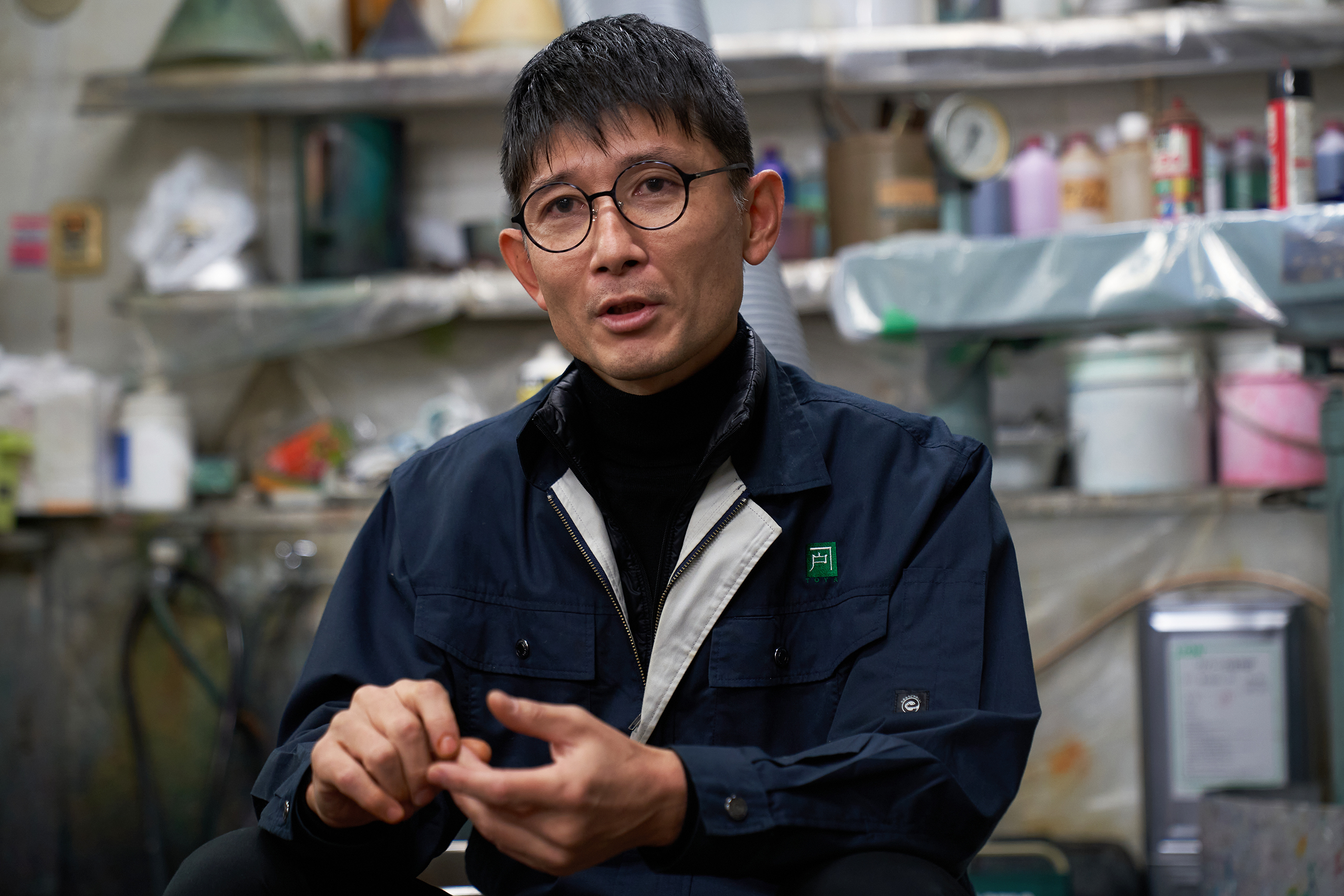Kenji Omura is the head of sales and future fourth-generation head at Ohemu, a small-scale Tokyo plastics fabrication company, and he really knows his stuff. His first few years with the family business were spent working in manufacturing, familiarizing himself with every process of the factory floor. That’s the beauty of machi-kōba, small city workshops, there is real commitment and personal attention to detail.
Founded in 1929 in Adachi Ward, a district with a vast network of machi-kōba, Ohemu originally fashioned ebonite into fountain-pen barrels, before moving on to processing other resins and plastics into machine components. Now, its clients range from electronics companies to those in the medical field, but its skilled precision cutting and machining have also led to intriguing creative projects with designers and startups.
One of these clients is designer Alvin Cheung, who is the founder of mechanical keyboard brand Tokyo Keyboard. Ohemu worked with him to create the Alix40, the brand’s newest keyboard that is manufactured in Tokyo. I visited Ohemu directly at their factory where Omura told me more about their involvement in contemporary product design and aspirations as a machi-kōba.
This interview has been translated from Japanese. It has been edited and condensed for clarity.
⎻⎻⎻⎻
Adachi is home to over two thousand machi-koba. What are the advantages of Ohemu being a machi-kōba based here?
Being a smaller outfit makes us more flexible — that’s the number one advantage. When people come to us, we can move swiftly to meet their requests. Being based in Tokyo’s shitamachi (traditional neighborhood) area, there are also a lot of opportunities to make connections with other machi-kōba. We specialize in plastic, but there are many different industries and factories in Adachi, including leather or metal. If we can’t do a project, for example, we can recommend other places that can. Those connections make Adachi a great place to work from.
Have you collaborated with other manufacturers?
We’ve always worked with sheet metalworkers. Apart from that, there was a recent project with another factory to make a stopwatch used for competitive swimming – our contribution was making plastic components for the strap. Really all over the place.
What is that like working with designers rather than other factories?
You know, there are actually a lot of design-focused projects out there. Usually they involve creating prototypes, and we propose different materials and processing techniques based on technical drawings we are given. Sometimes I have to tell a client, “It’s difficult to make what is depicted in your sketch as is” or, “It would be easier and better to realize your idea in a different way.”
We thrive on conversations like these with designers — they are essential to achieve something we can agree on. Of course, designers are really great at design, but when it comes to materials, techniques and processes, they are not always as knowledgeable. To make something really great together, we combine their expertise with ours.

Would you say this is a particular strength of Ohemu?
Yes, we have accumulated a lot of knowledge over many years. Within the world of plastics, there are so many different fabrication and processing techniques. We don’t just make things. Our strength lies in being able to propose solutions — different materials and techniques to make things the best way possible. We also excel at very precise machining and cutting, so you can call that one of our strengths, too.
The Tokyo Keyboard project with Alvin is an unusual one. How did you get involved in that?
Hmm, I actually don’t remember. We were introduced to it via Taku-san from Tokyo Fabhub (a network of small factories and industries), but I don’t think we talked about keyboards initially. Taku-san told me they knew someone who wanted to make items from acrylic and hoped to see our factory. At first, I thought, wow, this person makes interesting things. I later learned more about mechanical keyboards and its very niche but super exciting community. That’s when I thought things could get interesting.

What was it like working with Alvin?
From the start, I could sense Alvin was passionate about machi-kōba like us. His design was really good, too — it was easy for us to envision the manufacturing process and end product. So there was an affinity between us, and I knew it would work out.
Like a meeting of minds.
I really value that gut feeling when you first meet someone, knowing you will get along. That’s important. We had never made a keyboard before, so it was also a really fun challenge. I mean, I think it took a long time, but it didn’t feel long, haha. Once we got started, it was so enjoyable.
I want to hear more about the actual production – can you run us through the technical aspects of making a mechanical keyboard?
First of all, we cut and machine the body of the keyboard, essentially creating its basic shape. When acrylic is cut, it leaves behind a white film-like residue, so we have to polish the surface to make it transparent again. It’s a two-step process. We cut the acrylic with an NC (numerical control) router, a computer-controlled cutting machine that we program to cut automatically. Each piece is then polished individually and manually with a buffing wheel. There are several difficult parts that need precision and feel, so all this requires well-honed skills.
Wow, that sounds like a lot of work. Which keyboard parts are particularly difficult to create?
Well, take, for example, the keyboard body. The internal corners of the slots for the keys have very, very small radiuses (the curvature of the inside corners), making them tricky to machine. There are a lot of tiny details like that.
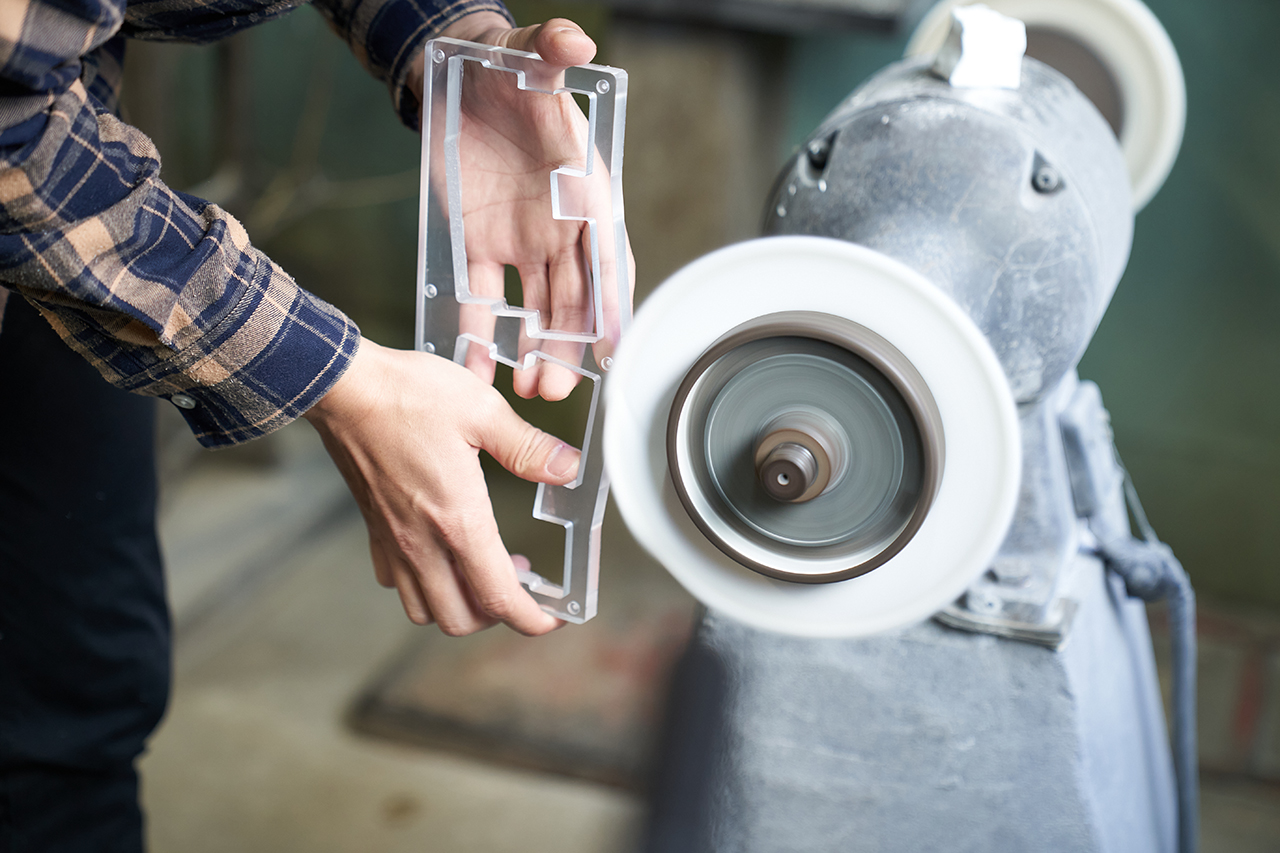
What’s next for Ohemu?
Alvin is originally from overseas, and I can speak a certain degree of English. I’d like to get more orders and projects from abroad and have Ohemu work with other designers around the world. In terms of design, I am quite interested in Europe. For non-design related aspects, it would be America, for example manufacturing and fabrication — I am very interested in that.
Why Europe for product design?
I heard from designers who we work with that the response to products they exhibited in Europe was good. To market and sell such items, though, that’s the challenge. We know how to make quality things, but we’re not good at what comes after. We do want to keep making that kind of plastic product, though.
I guess that’s a problem most workshops and factories in Japan face. Is there something different about manufacturing abroad?
I’ve never worked directly with overseas companies so I can’t say for sure, but it seems like they focus on speed and nimbleness. I went to Shenzhen to check out the manufacturing scene there, and the pace was crazy – I could feel the high-speed environment. I’d like to emulate some of that going forward, but, of course, while maintaining quality — quality and speed.
Do you have plans to work with more product designers?
We would love to work on more collaborations with individual designers! There are designers who are really interested in manufacturing, and plenty who want to make stuff. It doesn’t matter the size of the project. For us, the role of machi-kōba is to support this. ▲


